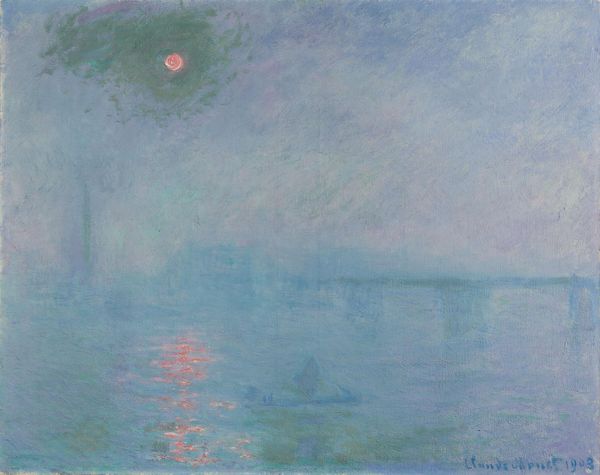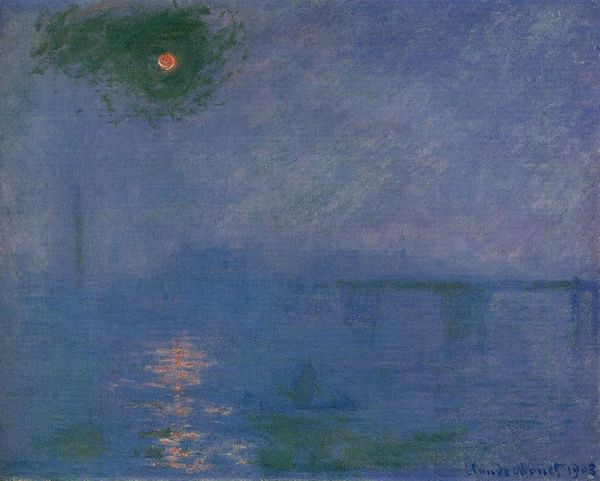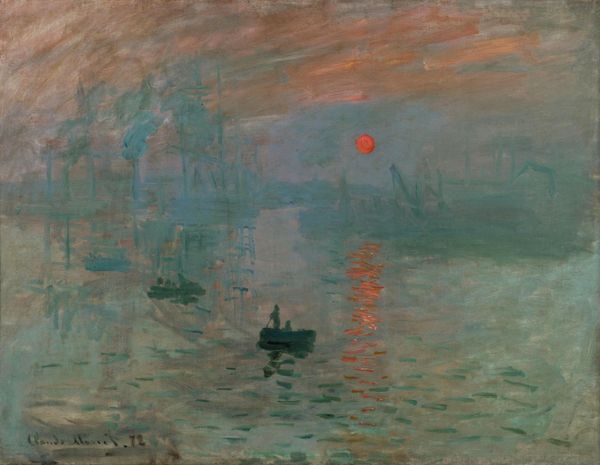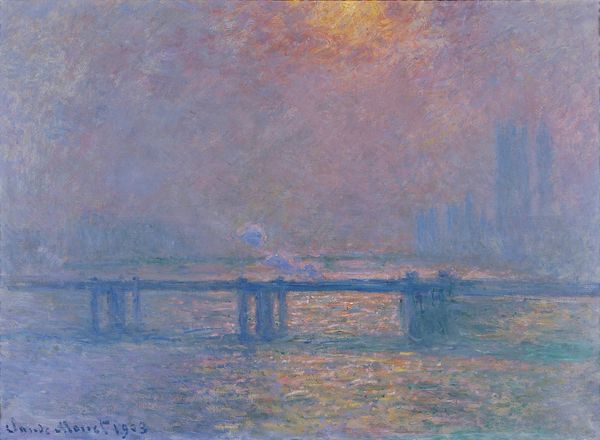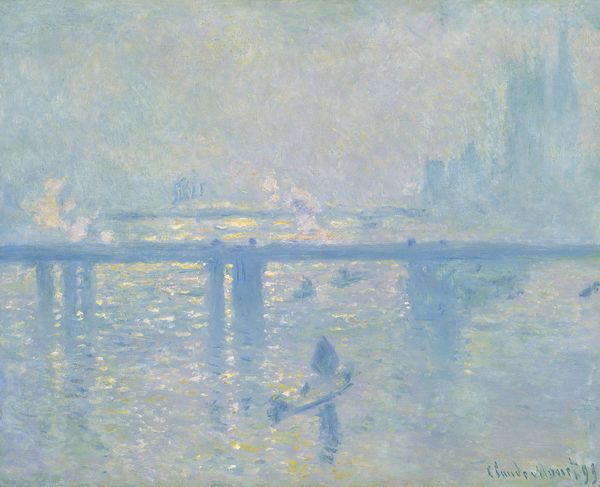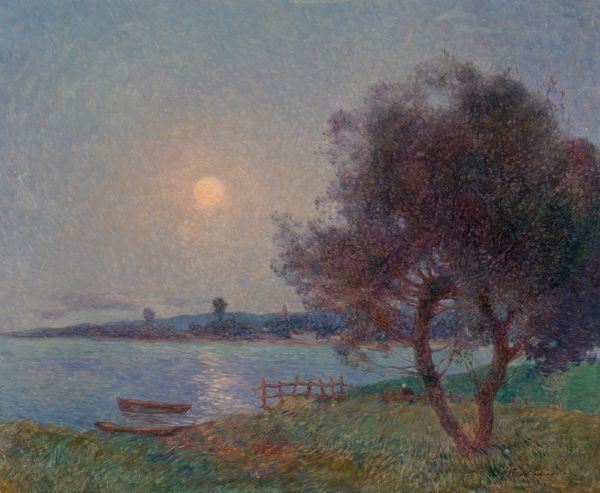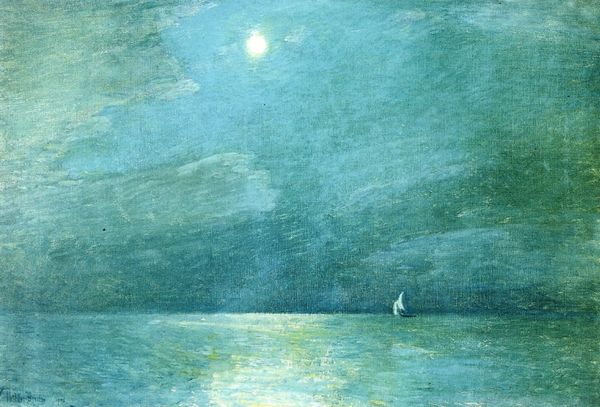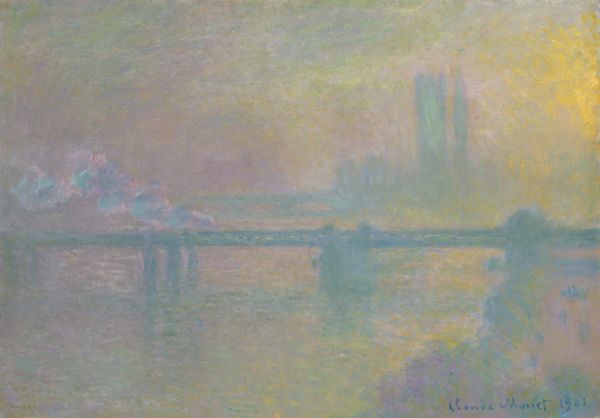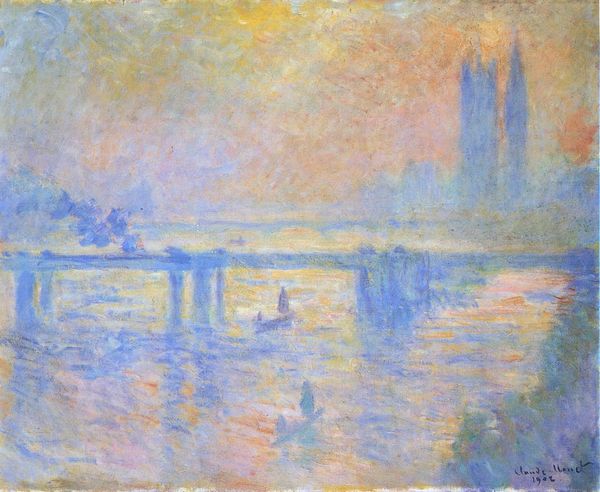
Copyright: Public domain
Artist: Oh, wow, just look at this atmosphere. It’s like… a hazy dream. All those soft blues and oranges fighting through the fog. It's a bit melancholy, but beautiful. Art Historian: What strikes you as you look at this, painted by Claude Monet in 1903, and known as Waterloo Bridge, Sunlight in the Fog is precisely this tension between the ephemeral beauty and the grit of industrial London. Artist: Grit is right. I can almost smell the coal smoke, can't you? I bet his lungs were black by the time he finished this series. You know, I see Monet really wrestling with light here – trying to capture something that’s almost impossible to hold still. Like memory itself, fading at the edges. Art Historian: Precisely. Monet set up his easel at the Savoy Hotel, painting the bridge at different times of day. What fascinated him, and many others, was how modern industry altered our experience of the landscape. Pollution made the sun glow and turned buildings into ghostly silhouettes. He shows how technology and the industrial age started impacting daily life and public health at a considerable pace. Artist: Ghostly is the word. It's strange that something so destructive – that pollution you mention – could birth something so beautiful. But maybe that's what the best art does, it finds a sort of morbid poetry even in destruction. Or perhaps Monet sought out these scenarios. Art Historian: It’s an irony, definitely, as urban spaces became contested and the bridge in particular acquired importance, symbolically representing new technological advances in London. So it is maybe, at the time, his political and creative act to frame modernity in the way he is doing. Artist: I wonder what he would make of the air these days… I find such works incredibly timely. Today. I see works like these as lessons - to notice things, however fleeting and tainted. To not be blind in pursuit of a shiny future. To remember that our choices will alter landscapes. Art Historian: I'd say Monet, and art, played a crucial role in making the consequences visible, shaping a public awareness. Artist: Absolutely, it's a call to see with new eyes. A smoggy, tear-filled vision maybe. But our own. Art Historian: A worthwhile cause, given where it got us.
Comments
No comments
Be the first to comment and join the conversation on the ultimate creative platform.
